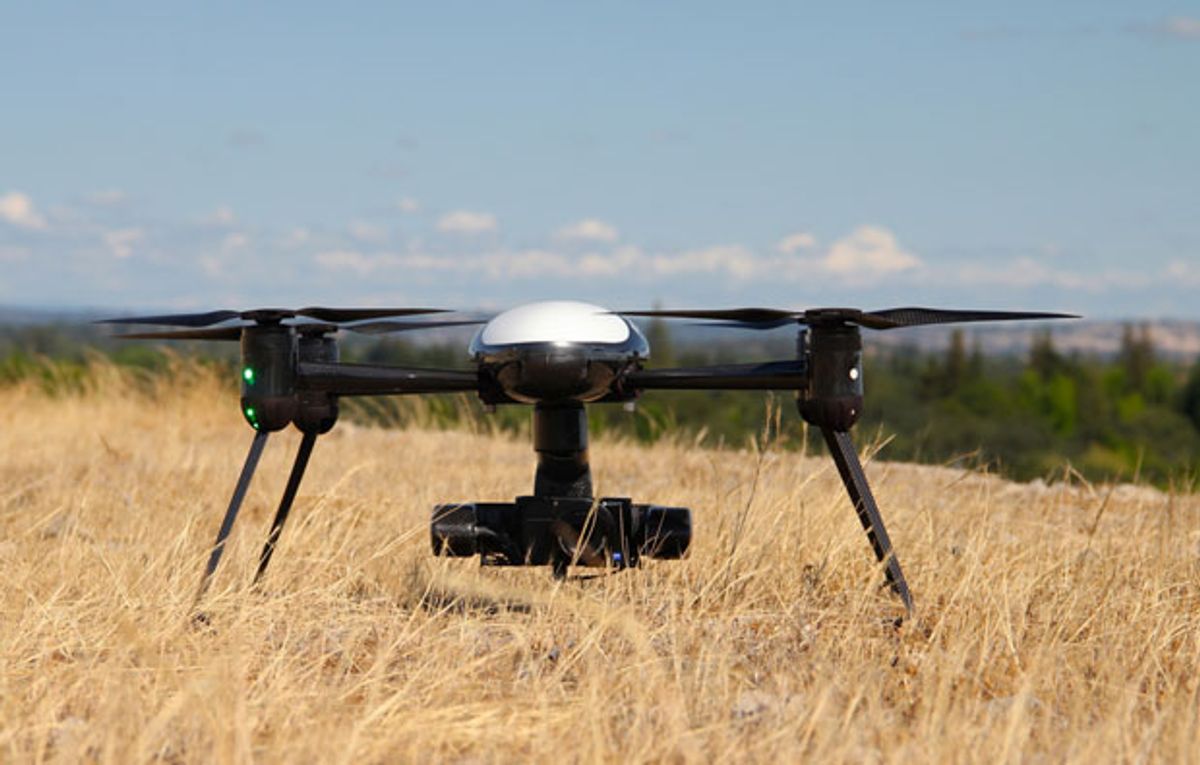Whether or not the U.S. Federal Aviation Administration has the authority to approve or regulate or monitor or oversee or whatever they want to do about unmanned aerial systems (UAS), the fact is more and more people are flying these systems everywhere.
Technically, you're not supposed to fly drones out of visual range, more than 400 feet in the air, or closer than five miles to any sort of controlled airspace (including the Class B airspace that's in place over most urban areas), without getting an an experimental airworthiness certificate (which specifically precludes carrying cargo) and applying for a Certificate of Waiver or Authorization (COA).
Most people, of course, do not pay any attention to any of this whatsoever, because flying drones is cheap, easy, and fun, and everybody is doing it, so why worry?
The worry, of course, is that some drone somewhere is going to crash and hurt someone or damage property or unlawfully spy on someone or, much worse, collide with a manned aircraft and cause an accident. This could lead to an immediate and harsh crack down that puts drones on its heels.
The FAA is not clueless about any of this, and while the fact that they're a government bureaucracy doesn't make them the most nimble organization in existence, they're at least trying to push for some progress toward intelligent and flexible UAS guidelines.
At the end of last year, the FAA announced the selection of six UAS research and test sites that'll be used to figure out how to properly regulate drones, and the first of these, in North Dakota, will be open for flight operations next month.
The FAA picked North Dakota because it was the only potential area to offer "a test range in the Temperate (continental) climate zone and included a variety of different airspace which will benefit multiple users."
By the summer of this year, drones will have access to two separate areas: one at North Dakota State University's Carrington Research Extension Center (here-ish), and one in Sullys Hill National Game Preserve (here). The first UAS to get tested out at the North Dakota site will be Draganflyer X4-ES, mounting a multispectral imaging system from Tetracam for soil quality assessment and crop health mapping.
The main goal of this site’s initial operations is to show that UAS can check soil quality and the status of crops in support of North Dakota State University/Extension Service precision agriculture research studies. Precision agriculture is one of many industries that represent areas for significant economic opportunity and UAS-industry expansion.
While supporting the precision agriculture project, the Northern Plains Unmanned Aircraft Systems Test Site also will collect safety-related operational data needed for UAS airspace integration. The information will help the FAA analyze current processes for establishing small UAS airworthiness and system maturity. Maintenance data collected during site operations will support a prototype database for UAS maintenance and repair.
Agriculture is likely to be one of the first areas in which drones might be able to establish themselves as a viable business, which is part of the reason that the FAA is starting there. Companies like SenseFly already have mature systems all ready to go: the eBee Ag will do fire-and-forget multispectral crop imaging right out of the box, and the only thing holding it back right now are FAA regulations: they're already being used (quite successfully) in Europe, while we're all waiting around here in the United States twiddling our thumbs.
[ FAA ]
Evan Ackerman is a senior editor at IEEE Spectrum. Since 2007, he has written over 6,000 articles on robotics and technology. He has a degree in Martian geology and is excellent at playing bagpipes.



